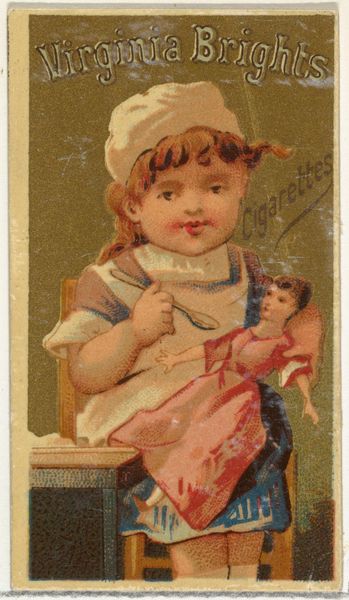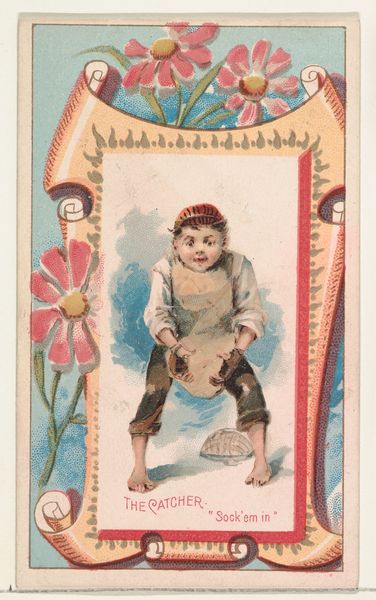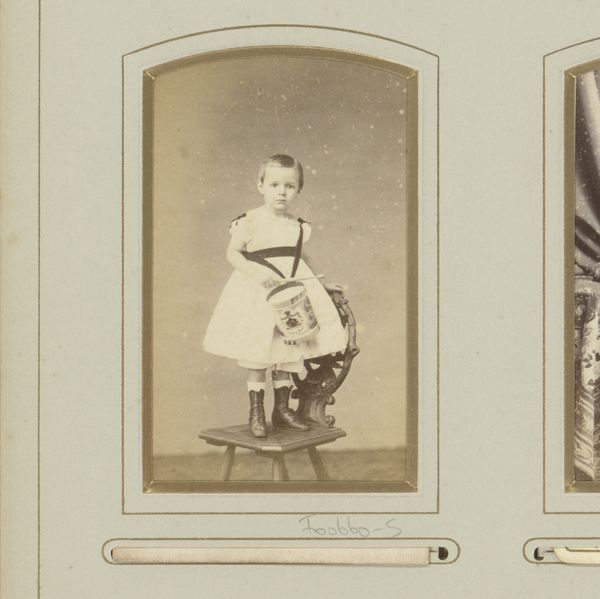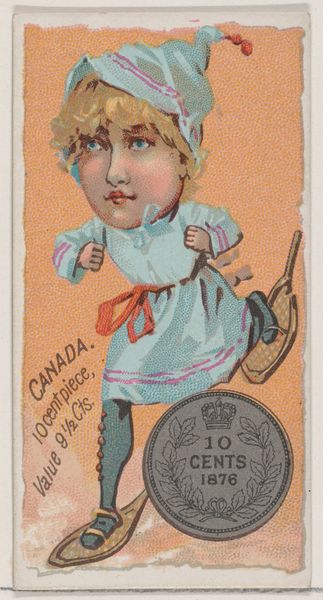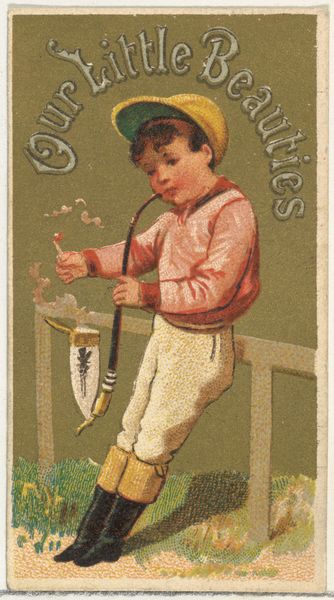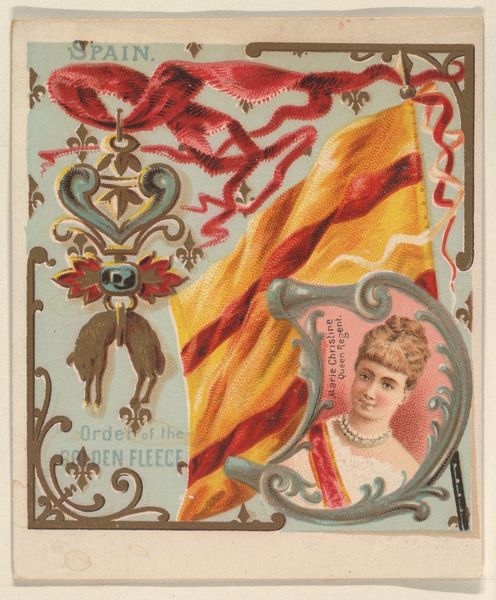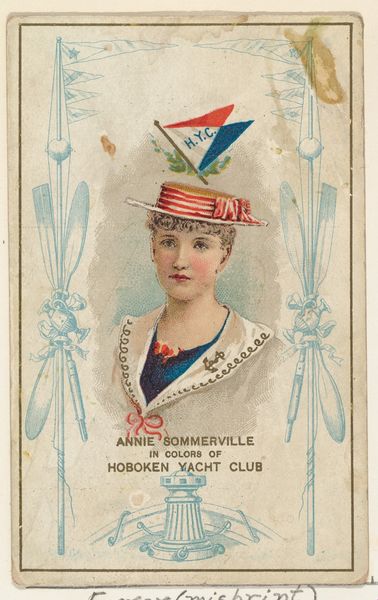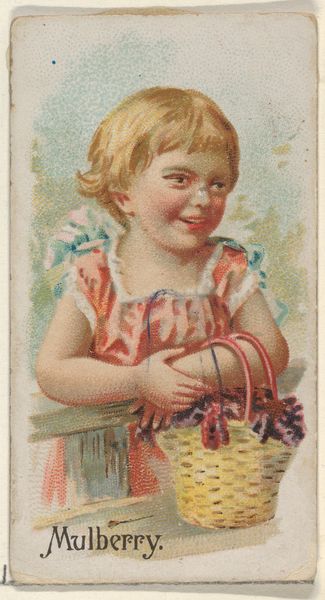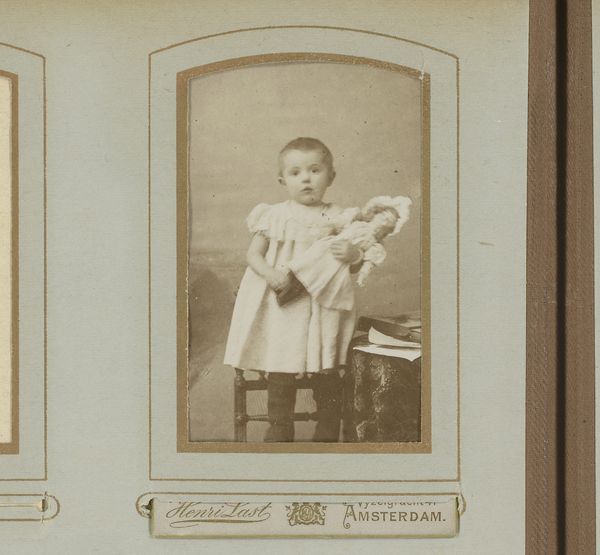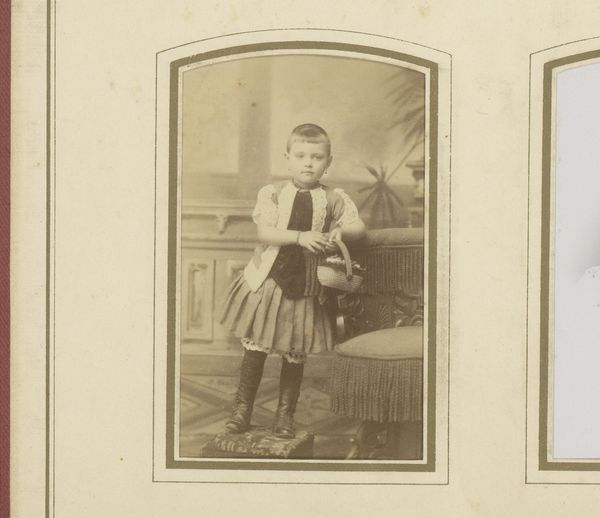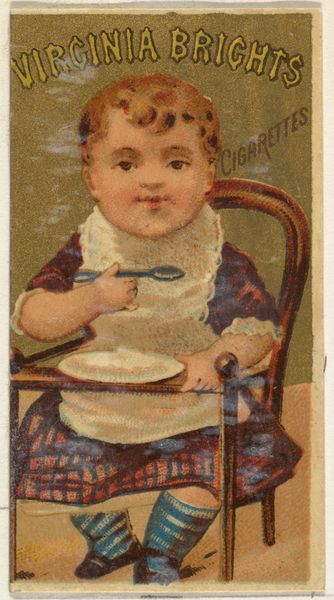
Alphonse XIII, King of Spain, from the Rulers, Flags, and Coats of Arms series (N126-1) issued by W. Duke, Sons & Co. 1888
0:00
0:00
drawing, print
#
portrait
#
drawing
# print
#
caricature
#
caricature
#
historical fashion
#
history-painting
#
academic-art
Dimensions: Sheet: 2 1/2 × 4 5/16 in. (6.4 × 11 cm)
Copyright: Public Domain
Editor: Here we have "Alphonse XIII, King of Spain" from the Rulers, Flags, and Coats of Arms series, a print from 1888 by W. Duke, Sons & Co. It’s interesting how they've depicted the infant king. What sort of context might inform how we interpret this work? Curator: Well, seeing this commercial print from the late 19th century, we need to consider it as a cultural artifact embedded in a specific historical moment. It’s more than just a portrait; it’s a statement about power, lineage, and the very construction of national identity. Tobacco cards were, essentially, advertising. So how does this card, meant to sell tobacco, participate in constructing ideas about Spanish identity, royalty, and even masculinity? Editor: So it’s not just about Alphonse XIII himself? Curator: Not at all! Think about the symbols surrounding him. The coat of arms, the flag, even the bullfight scene – all carefully curated to project a particular image of Spain. This was a time of great social and political upheaval in Europe. How might this seemingly innocuous card reflect, or even attempt to counteract, anxieties about national stability and colonial power? Who was the intended audience, and what messages were they internalizing about monarchy and nationhood? Editor: That's fascinating. It’s like the card is performing a certain idea of Spain, more than just showing it. I hadn’t thought about it as active in that way. Curator: Exactly! Consider the gaze. How does idealizing the monarchy in such an object, which presents power as naturally inherited and even infantile, normalize asymmetrical relations of power in society? Also, how does that depiction contrast with or amplify images circulating of colonized people, racialized as essentially infantile or not fully developed? Editor: That adds so much depth. Thanks, I'll definitely look at these images differently now! Curator: And I see this piece differently through our conversation. I realize it's essential not only to understand the original intended message, but how it speaks in a context that has reckoned with race and decolonization.
Comments
No comments
Be the first to comment and join the conversation on the ultimate creative platform.
